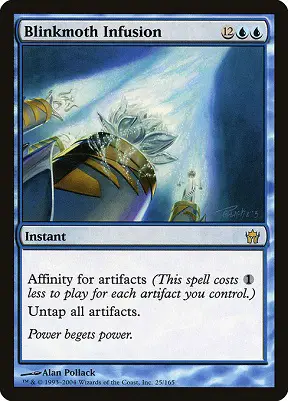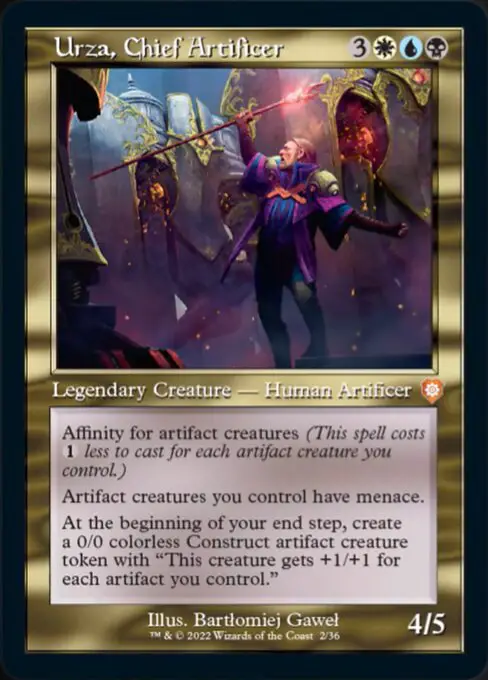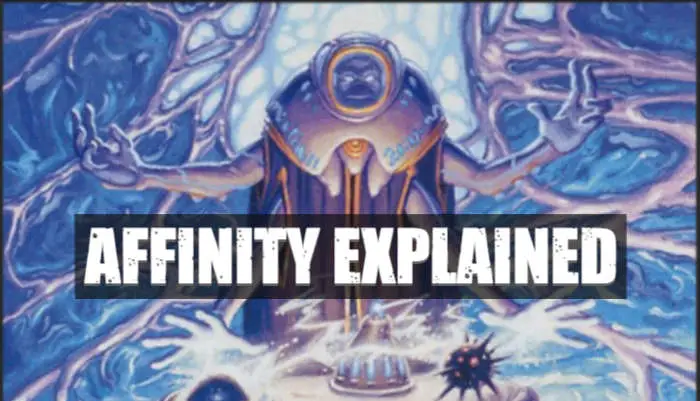Magic: the Gathering’s newest set, The Brothers’ War is finally here. With each new set comes exciting mechanics, both new and old. In this article, I’m going to go over one mechanic that’s making a comeback in the new set. That mechanic is none other than Affinity. To prepare you for the new set, I’ll go over all of the new cards and explain how the mechanic works. Let’s jump right into it.
The Affinity ability reduces the cost of a spell by one mana for each permanent of the same type the player currently controls.
As far as abilities go, Affinity isn’t too complicated. There are, however, lots of interactions and complications that arise from almost any mechanic, no matter how straightforward it may seem. Read on for a detailed guide to Affinity, as well as a glimpse into the new cards being printed in The Brothers’ War.
What is Affinity?

The Affinity ability always comes with a specific card-type attached to it. For example, Affinity for artifacts is by far the most common ability. That’s not the only one, however. Here’s a list of all the different types of Affinity abilities in MTG so far.
- Artifacts
- Plains Cards
- Swamps
- Mountains
- Forests
- Islands
- Tokens
- Clowns
As you can see, Affinity doesn’t deal with just artifacts, though the ability has definitely made a name for itself by contributing to crazy powerful artifact decks.
How Does It Work?
This is actually one of the simpler abilities in the game of Magic. If a card has Affinity for Artifacts, then you get a discount of one generic-mana for each artifact you control when casting that spell. So if you have a spell with Affinity for artifacts, and you currently have six artifacts on the battlefield, that spell will cost six generic mana less than usual. Pretty awesome, right?
Rules

- Affinity only reduces the amount of generic mana you pay for a spell. The ability never reduces the amount of non-generic mana in a spell’s casting cost.
- Affinity never reduces a spell’s cost to less than zero.
- The mana-value, or converted mana-cost, of a spell stays the same. Affinity only affects the amount of mana you pay for casting spells, not the spell’s mana-value.
- The cost-reduction is calculated before you actually pay any costs. This means you can sacrifice an artifact (for example) while paying a spell’s mana-cost and still have that artifact count towards the cost-reduction.
- If a spell has multiple instances of Affinity, each one is calculated and combined.
RELATED: 2022 Pioneer Challenger Decks And Decklists
New Cards
So far, there has only been one new Affinity card spoiled from the new set. We’re also not sure how many other new or old Affinity cards The Brothers’ War will have for us. Hopefully quite a bit! Be sure to check back soon for the latest spoilers.
Urza, Chief Artificer

Overview
Urza, Chief artificer is going to be a powerhouse for artifact decks. If you have three artifacts out (which shouldn’t be too hard to achieve), you get to cast Urza for a measly three-mana. A three-mana 4/5 that gives you a nasty artifact creature each turn while also giving all of your artifacts menace? Yeah, that sounds pretty darn good to me.
At the very least, Urza is going to be a beastly commander.
End Step
Affinity is an exciting and powerful ability, and I personally can’t wait to see what other cards Wizards gives us!
The Brothers’ War releases on November 18th, with prerelease starting a week earlier. Until then, be sure to check back here for all the latest spoilers!
